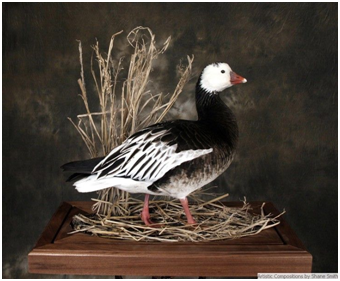You probably already know what Taxidermy Is? In fact, you've probably gone to a museum or a friend's house and saw stuffed animals on display. That, right there, is Taxidermy. Taxidermy, in its simplest of definitions, is the art of stuffing and mounting the skin of dead animals, making them look lifelike. Almost all animals can be taxidermied, with birds, bears, deer, wolves, and moose being the most common.

Obviously, in order to have taxidermy subjects, there should be a fair amount of hunting involved. You could say that taxidermists and hunters work hand in hand, although in some cases, taxidermists can be hunters, too. As mentioned earlier, birds are among the most common taxidermy subjects, and they also happen to be one of the most popular. That's because birds are easier to hunt and taxidermy. That's not to say, though, that you should take bird taxidermy lightly. It still takes a considerable amount of skill and patience in order to hunt these creatures and mount them.
If you're looking for a new hobby, why not explore the possibility of being a hunter and taxidermist rolled into one? You could keep the stuffed animals as trophy or you could sell them for a profit. First, though, you would want to compare the best air rifles first in order to be fully equipped to take on the dual role.
A few bird specimens that appeal most to taxidermists are turkeys, geese, pheasants, quails, and ducks. Since birds are, well, flighty, preparation is important when hunting them down. Reading an air rifle review would give you a heads up regarding the different features that make an air rifle suitable for hunting birds.
As much as possible, you don't want an all-too powerful rifle because you don't want to mess up the skin of the bird. Badly damaged bird's skin will not give you enough to work on when you taxidermy. Make sure the rifle you bring for hunting is powerful enough to take down a bird but not too potent to ruin the skin.
In addition, make sure to avoid firing away at young birds since these have plenty of pinfeathers. At the same time, birds with thin and delicate skins like snow birds and cardinals are not suitable for taxidermy since their feathers shed easily. If you're a newbie hunter/taxidermist, choose coots as your practice bird. These birds have medium-sized bodies, so you won't feel uneasy aiming your air gun at it. Moreover, it would be easier for you to work on it come taxidermy time.
An important tip if you want to taxidermy a bird is to avoid using formaldehyde. Soaking a bird in a jar full of said chemical will cause the bird to rot over time, more so if you did not desiccate it properly. It's also important to keep the feathers dry lest you want them to stick together. The Internet is a vast treasure trove of information regarding bird taxidermy, so make sure you use it to your advantage when you embark on this hobby.
